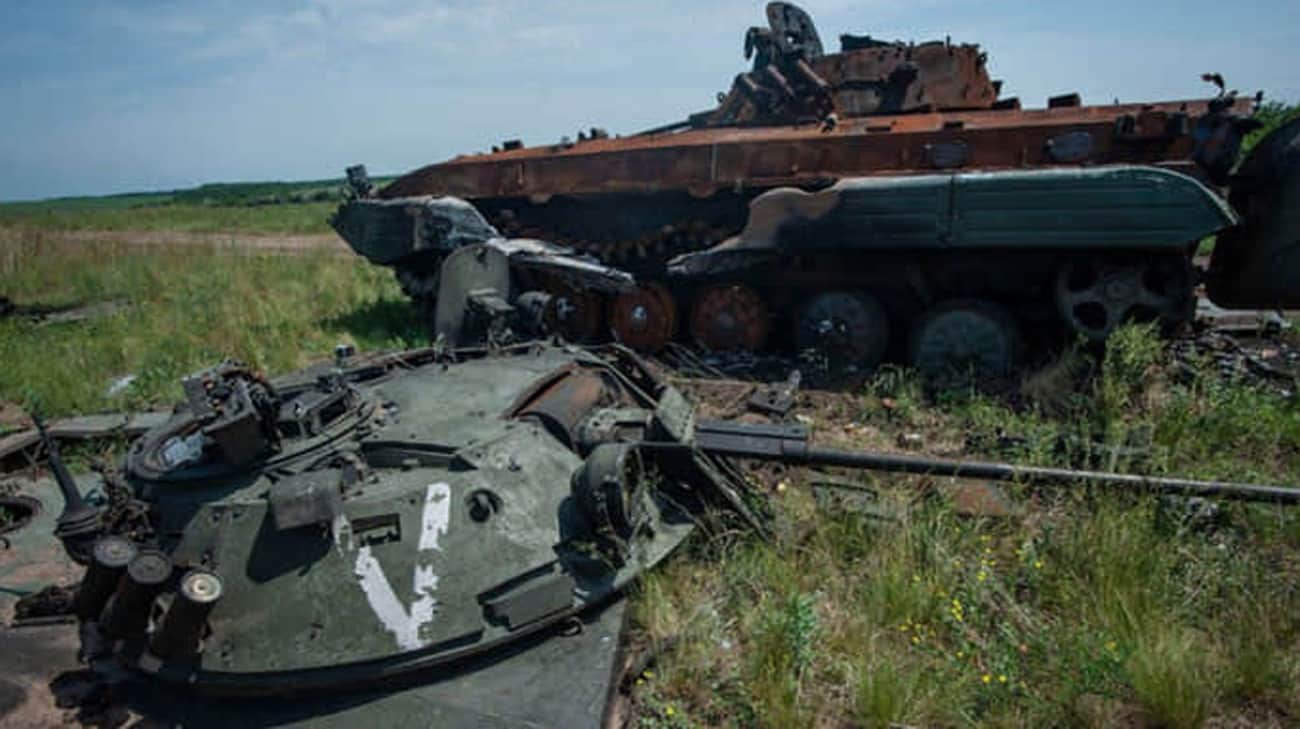As the war in Ukraine drags on for over 1,000 days, Russia’s military has found itself increasingly reliant on a crucial resource from its past—Soviet-era stockpiles—to sustain its war effort.
Despite suffering staggering losses in both personnel and equipment, Russia’s ability to draw on these reserves has allowed it to continue making territorial gains in Ukraine, according to an intelligence assessment published by the UK Ministry of Defense on November 21.
Before the full-scale invasion of Ukraine in 2022, Russia’s military sought to build a modern, professional force capable of carrying out complex operations. However, the reality of war has forced a shift in strategy.
“After 1,000 days of the conflict, Russia’s land forces are radically different to the force that originally invaded Ukraine,” UK MoD said.
The assessment further noted that after suffering over 700,000 casualties, including killed and wounded soldiers, Russia’s once-modernized fighting force has been severely degraded.
This loss of manpower, coupled with the absence of well-trained personnel, has forced Russian commanders to revert to basic tactics, often at the cost of high casualties.
One of the major setbacks for Russia has been the destruction of its heavy equipment. The war has apparently claimed at least 3,500 main battle tanks and 7,500 armored vehicles, leaving the Russian military with a major gap in its mechanized capabilities.
Yet, rather than stalling Russia’s war efforts, these losses have been mitigated by the country’s vast stockpiles of Soviet-era military equipment. The USSR’s legacy of maintaining large reserves has allowed Russia to replenish its tank and armored vehicle fleets, keeping its land forces operational despite the heavy losses sustained in battle.
Military analysts from the UK Ministry of Defense pointed out that this reliance on quantity over quality, combined with Russia’s tolerance for high casualties, has allowed Russian forces to maintain pressure on Ukrainian defenses.
While Russia’s forces may no longer be the highly-trained professional army they used to be, their sheer numerical advantage over Ukrainian forces continues to have a huge impact on the battlefield.
As of 2024, the territorial situation in Ukraine remains highly dynamic. The frontlines are more unstable than they have been since the early days of the war in 2022, with Russian advances picking up pace.
The Russian military’s ability to carry out large-scale assaults, supported by Soviet-era stockpiles, seems to be a key factor in its ongoing territorial gains.
Russia’s Soviet-Era Arsenal
The vast reserves of tanks, armored infantry vehicles, and artillery built up during the Cold War have become the backbone of Russia’s military operations as it faces staggering losses on the battlefield.
However, as massive as these stockpiles are, they are not inexhaustible. The very fact of Russia’s reliance on these aging assets points to the limits of its warfighting capacity.
While the Soviet Union once stockpiled enough military hardware to rival the rest of the world combined, the kits in use today are decades old and significantly less advanced than the modern equipment deployed by NATO.
During the Cold War, the Soviets built thousands of armored vehicles, keeping in mind their current and future defense needs. Today, these stockpiles are being tapped in a desperate effort to replenish losses on the frontlines, but the long-term sustainability of this strategy is uncertain.
The Economist pointed out that when Russian Defense Minister Sergei Shoigu boasted in December 2023 that 1,530 tanks had been delivered to the frontlines, he conveniently omitted the fact that nearly 85% of them were not newly manufactured but rather refurbished Soviet-era models, primarily the T-72, T-62, and even older T-55 tanks from the 1950s.

According to an analysis by the International Institute for Strategic Studies (IISS), only a small fraction of these tanks were newly built. Since the invasion, Russia has managed to field about 175 relatively modern T-90M tanks, a model considered to be one of its most advanced.
However, most of the T-90Ms currently on the frontlines are not new but are upgrades of older T-90A models. Early this year, IISS estimated that Russia’s production of new T-90Ms in 2024 could be as low as 28 tanks, further underscoring the severe constraints on Russia’s production capabilities.
Russia is also struggling to source key components for both new builds and refurbished equipment. Once reliant on European suppliers, Russia now faces severe shortages of critical parts, such as fuel heaters for diesel engines, high-voltage electrical systems, and infrared thermal imaging devices, all of which are blocked by international sanctions.
The lack of high-quality ball bearings, vital for the smooth operation of its military vehicles, further hampers production efforts. While Chinese alternatives are sometimes available, they do not meet the previous standards, adding another layer of challenge to an already strained supply chain.
Overall, while the Soviet-era stockpiles have kept the Russian war machine moving forward for now, the long-term viability of this approach remains uncertain.
Without a major change in production capabilities or the development of new technologies, Russia’s military might begin to stall, forcing a reevaluation of its strategy in the coming months.
- Contact the author at ashishmichel(at)gmail.com
- Follow EurAsian Times on Google News




